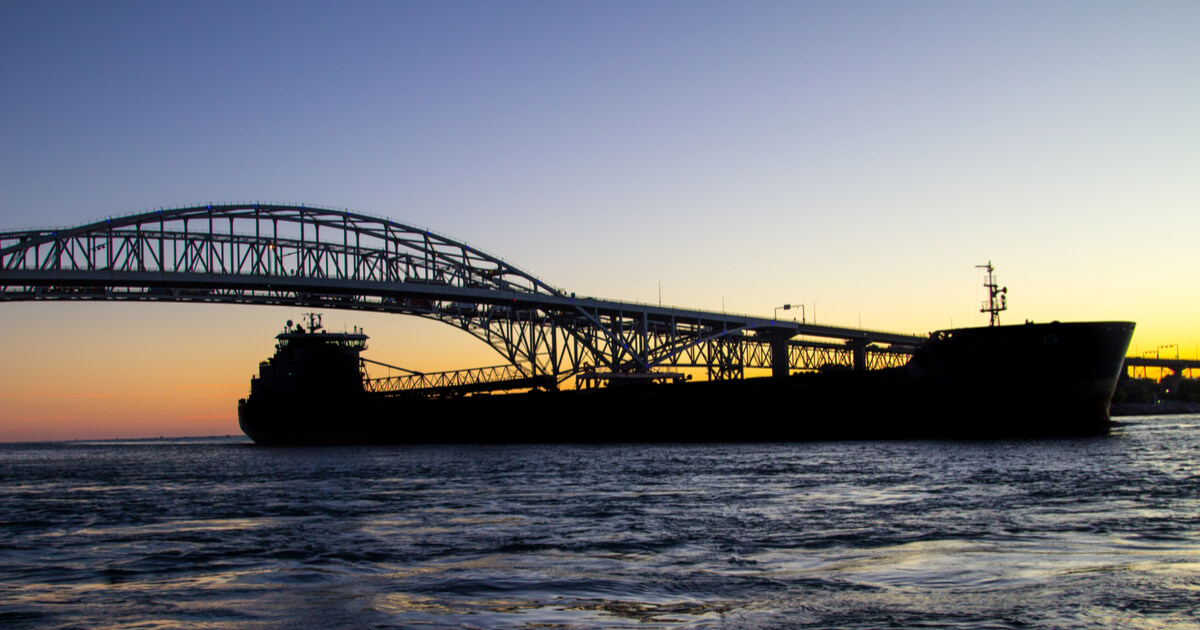
Ice-breaking challenges in Lake Superior slowed the start of cargo vessel movement along the 2,300-mile, 100 port, Great Lakes-St. Lawrence Seaway System, but American grain exports skyrocketed.
Truckers have transported upwards of 176,000 metric tons to Great Lakes ports since the navigation season opened in March. The year-over-year increase through mid-May was a staggering 175-percent, according to the Great Lakes Seaway Partnership.
“On a more positive note, grain exports from U.S. ports were in strong demand along with shipments of salt, steel, and containers. We expect that the demand for different cargo segments will continue to be impacted by fluctuating prices and trade flows related to global supply chain issues and the Russia-Ukraine conflict,” Bruce Burrows, president and CEO of the Ontario-based Chamber of Marine Commerce, reportedly stated.
In Ohio, Cleveland and Toledo ports both experienced improved grain movement through April. A reported 78 vessels made port, with tonnage rising by approximately 11 percent. Grain, salt, and coal drove freight movement. Road salt loads rose by 21 percent, as Canadian mines ramped up production and distribution along the international border.
“While it is early in the season, there are signs that 2022 will be successful,” Joseph Cappel, vice president of business development for the Toledo-Lucas County Port Authority, reportedly said. “Grain and fertilizer are expected to be big movers in 2022 as trade patterns and pricing continue to fluctuate based on various global happenings. If our staple commodities like coal, iron ore and other dry bulk commodities remain consistent, we will have a strong year.”
Although some are attributing the grain movement spikes to a Russia-Ukraine war ripple effect, others see the Great Lakes uptick as a natural alternative to bottlenecked coastal ports. The Port of New York and New Jersey has struggled to move containers, leaving vessels idling off the coast. And the Port of Los Angeles and Port f Long Beach have never fully resolved the 110-vessel backlog experienced in 2021.
In Cleveland, cargo movement more than doubled in April over the same period in 2021. After improving port infrastructure in 2021, the Ohio port is attracting new shippers.
“Our container numbers have also increased dramatically due to the addition of Doornekamp’s Peyton Lynn C to the Spliethoff service last September,” David Gutheil, chief commercial officer at the Port of Cleveland, reportedly said. “Export customers are now jumping on board due to shortages of containers and vessel space at coastal ports. We are very close to completing the first phase of a very large infrastructure project which will improve the efficiency of the movement of general cargo throughout the port. This project will be completed in its entirety late first quarter of 2023.”
Although Ohio ports and freight carriers have been winning big, ice-breaking setbacks hampered the Port of Duluth-Superior. The port linking Minnesota and Wisconsin saw 2.43 million tons pass through in April. The 38 percent reduction was primarily due to lower iron ore movement. However, grain exports hit 148,620 short tons through April, nearly doubling 2021.
Sources: workboat.com, michiganfarmnews.com











Leave a Comment